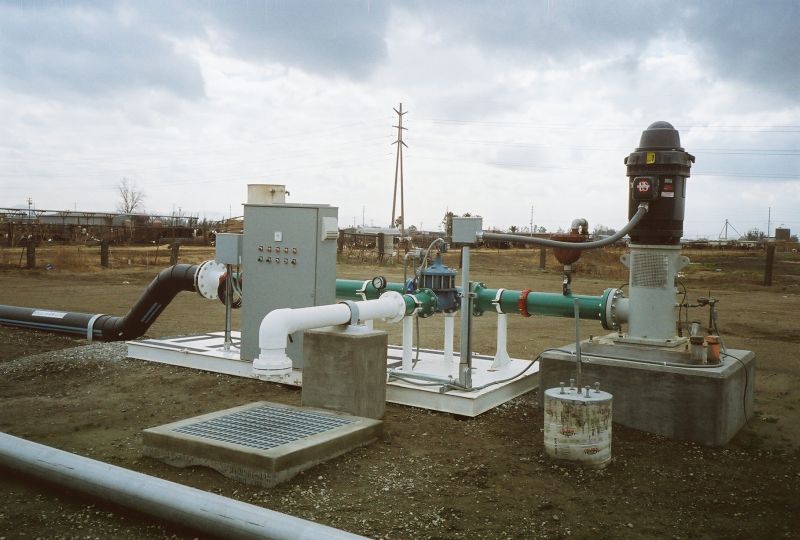Well water is one of the cheapest sources of water available but it’s often exposed to high levels of environmental and industrial contamination. More than 100 million people in the United States get their water from public-supply wells and the CDC estimates that over 15 million homes in the USA get their water from private wells.
Unlike public wells, private wells aren’t regulated or treated by the EPA, so there’s no guarantee that the water is safe. Well owners have to monitor and improve their water quality themselves.
Well Water Contamination
Untreated well water may contain chemicals like arsenic, lead, radon, chromium, and mercury. Bacteria and other microorganisms can also get into your well from groundwater or the surrounding soil. You have a much higher chance of getting harmful microorganisms in your water if your well is dug near a septic tank.
Moreover, water run-off from rainfall and snow-melt can also add microorganisms into the well system or seep into underground water. If any kind of waste or chemical leakage happens around your private well, chances are that the well water will get contaminated.
How to Improve Well Water Quality
You can improve your water quality by installing a whole house water filter. Whole house filters are point-of-entry water filtering systems that filter water from the main line as it enters your home. There are different types of whole house water filters, most of which follow a three-stage process:
The Pre-Filter Stage
The pre-filter removes large particles and contaminants from the water in the first stage. It eliminates all the particles, silt, and clay floating in your well water.
The Activated Carbon Stage
Activated carbon is a filtration media that gets rid of physical and chemical contaminants. This stage works to eradicate harmful chlorine and chloramines that may be present in your water (if you use a public well). It can also remove some herbicides and pesticides.
The Post-Filter Stage
This stage will eliminate any remaining sediments or pollutants.
Also Read: Which Water Filter to Buy for Your Home?
How Whole House Filters can Improve Your Well Water
Whole house water filters treat the well water before it is distributed in the house. Untreated well water is corrosive at low pH and leaches metals from the pipes carrying it into the house. Consequently, your water becomes contaminated with metals and the pipes begin to suffer damage. Using a whole house water filter, you can remove metal pollution and increase the lifespan of your pipes and fixtures by regulating the water’s pH level.

Note that different types of whole house filters solve different impurity problems. For instance, if your well water is loaded with debris, you can get a whole house sediment filter. It’ll help remove large and small particles from water. Also, you’re better off getting a UV filter if the well water has harmful microorganisms. If the water has a low pH and is corrosive, an acid-neutralizing filter will help regulate its pH and reduce corrosiveness.
You can install multiple filters in your whole house filtration system depending on the well water’s problems. That way, you get rid of several water issues at once.
How to Set up Your Whole House Filtration System
Before getting and setting up a filtration system, you should consider the following few factors:
The state of your well water: Before purchasing a whole house water filter, you need to know the current state of the well water. You can find it out by getting a water test done at a certified laboratory. The test will identify the exact contaminants in the water and determines the next step and the type of filter you need.
Selecting the best filter: You can consult a professional after the water test. They’ll guide and help you choose the best whole house filter to handle the contaminants in the water system. The water filter you choose should have a flow rate high enough to meet the demand of the appliances and fixtures in the house. If it has a lower flow rate, it will affect the water pressure in your home and lead to interrupted water current. Also, remember to check if the filter is NSF certified. A certified filter is the best whole house water filter for well water that you can possibly get.
The Cost of a Whole House Water Filtration System
Whole house water filtration systems will usually cost thousands of dollars. The prices may go higher if you need multiple filters at once. It may sound like a bank breaker, but the expense is usually worth it. With proper care and maintenance, your filtration system can last for years.
Apart from paying for the filter itself, you have to pay to get it installed. Installing a whole house filtering system may cost anywhere from $600 to $5000, depending on the complexity of the system of choice. You can manage installation costs by using the most efficient filters to treat the water. If you spend money on a filter for problems that aren’t threatening, you’ll end up incurring losses.
Also Read: 5 Best Sub $300 Home RO Water Filters
Installing a Whole House Filtration System
Whole house filtering systems are best installed by professional plumbers. Even if you have some plumbing experience, it’s best to sit this one out. Some filter brands don’t give you a warranty unless a professional plumber installs their products.
The installation usually takes between 2-5 hours for a trained installer. If you choose to do it yourself, study the manual carefully and choose a strategic place to set up the system. You need to place it in an area where it’s not affected by the elements but is easily accessible for maintenance.
After your whole house filter has been installed, you’ll need to keep it running with regular maintenance. Proper upkeep involves regularly releasing the sediments through the flush valve and rinsing periodically. Also, some filters need to be replaced every 3-6 months or you risk them getting contaminated.
Follow Homecrux on Google News!




